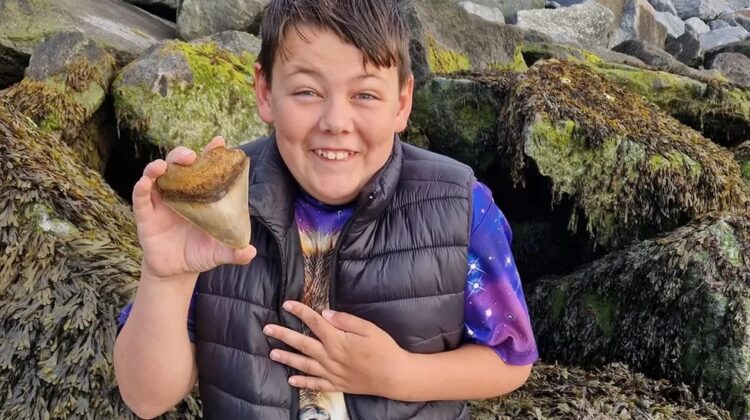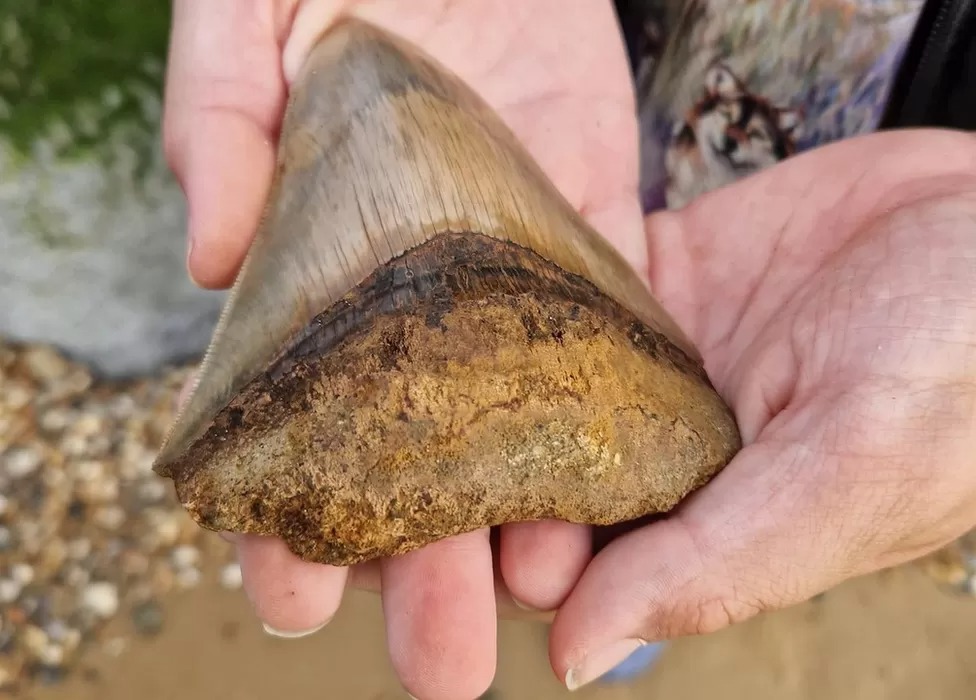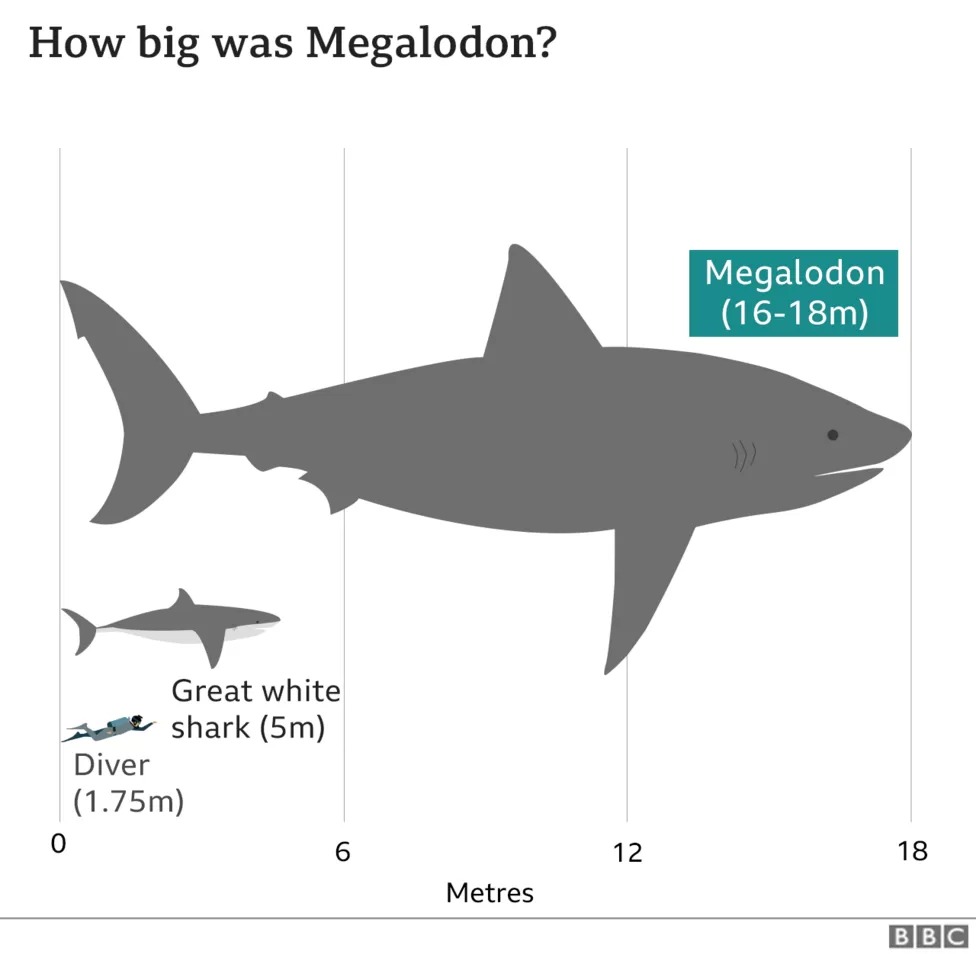
A thrilling fossil find has stirred excitement along the Essex coast as 13-year-old Ben from Hemel Hempstead stumbled upon a massive shark tooth belonging to a prehistoric behemoth. The remarkable discovery took place during a weekend break at Walton-on-the-Naze, where the young fossil enthusiast was on a mission to hunt for ancient relics.

The tooth, measuring an impressive 10cm (4in) in length, left Ben elated, and his father, Jason, couldn’t have been prouder. The find was quickly identified as a megalodon tooth, and wildlife experts were quick to deem it “rare.” Megalodons, the massive cartilaginous fish of ancient times, have long fascinated paleontologists and the general public alike due to their immense size and fearsome nature.
Jason and his son share a passion for fossil hunting and often venture out to Walton-on-the-Naze for this purpose. Over the weekend, they had already covered an impressive 16 miles (26km) of coastal terrain in pursuit of their ancient treasures. As the sun rose on Sunday morning, the pair ventured to the beach, where Ben’s keen eyes spotted the tooth nestled under rocks at around 07:00 BST.
“We could just see the edge of it, sticking out, and Ben knew straightaway it was something and pulled it out of the sand,” recounted Jason, who shared his son’s delight in the incredible find. The duo wasted no time and headed to Essex Wildlife Trust’s Discovery Centre at Walton-on-the-Naze to confirm their suspicions.

Experts at the center confirmed the tooth’s authenticity, estimating it to be between 20 million to 3.6 million years old. The megalodon, a dominant carnivorous predator of its time, had no known adversaries and could devour anything it desired, with whales and seals being among its favored prey. This ancient shark patrolled the open seas, launching swift attacks from below the surface to incapacitate its victims before delivering the final blow.
For young Ben, who aspires to become a paleontologist, the megalodon tooth is a cherished addition to his growing collection of fossils. Jason shared that they make a yearly pilgrimage to Walton-on-the-Naze for fossil hunting and also explore the wonders of the Jurassic Coast, a 95-mile (153km) stretch of southern England’s coastline rich in geological marvels.

While the megalodon tooth has been met with awe and admiration, the Natural History Museum expressed caution, suggesting that it might have been purchased and misplaced on the beach by someone else. Some megalodon teeth found in the UK have been reworked from other deposits, leading to changes in their appearance over time. Nonetheless, the pristine condition of Ben’s find leaves experts curious about its origin and journey to the shores of Walton-on-the-Naze.

Megalodons thrived long after the extinction of dinosaurs, approximately 65 million years ago, making them a prominent figure in Earth’s prehistoric era. As young enthusiasts like Ben continue to explore the secrets hidden within the sands, each discovery brings us closer to understanding the ancient world and the magnificent creatures that once roamed our oceans.

Leave a Reply